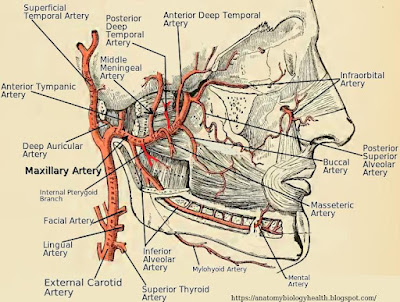The semimembranosus muscle lies on the medial border of posterior side of the human thigh. Its lateral half is covered by the semitendinosus muscle, leaving a mark in the form of a wide longitudinal groove. With the medial margin of the muscle being free, it stretches along the full length of the femur. It is part of the posterior group of muscles of the thigh.
The semimembranosus muscle originates from the ischial tuberosity of pelvis by a flat, strong tendon. Then it travels downwards vertically along the length of thigh, partially covered by the semitendinosus. It ends up in a distal flat tendon which narrows gradually. This tendon winds around the medial epicondyle as it runs to the anteromedial surface of tibia where it becomes wider and divides into three bands; the first one is inserted into the medial condyle of tibia; the second band fuses with the fascia covering the popliteus muscle; and the third one is inserted into the oblique posterior ligament of knee.
Function/action
It extends thigh straight at the hip-joint. It also flexes and rotates leg medially.
Nerve supply
The semimembranosus muscle is innervated by the tibial nerve, which is a major branch of the sciatic nerve.
Blood supply
It receives oxygen-rich blood from a branch from the deep femoral artery, which arises from the femoral, and the gluteal arteries, which spring from the internal iliac artery.
Below, posterior aspect of muscles of right thigh, showing the semimembranosus, semitendinosus, and biceps femoris muscle.
The semimembranosus muscle, with the semitendinosus cut away to expose the groove along its lateral half.








